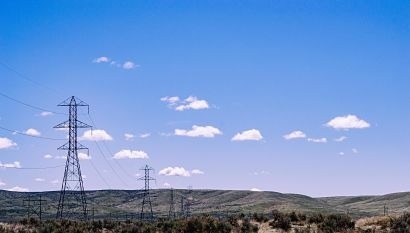
The Facilitating America’s Siting of Transmission and Electric Reliability (FASTER) Act would streamline Federal Energy Regulatory Commission (FERC) backstop siting authority, allowing the Commission to authorise National Interest Electric Transmission Facilities.
“To meet our nation’s full potential as a global leader in the clean energy transition and to replace rapidly aging electric infrastructure, we are going to need to invest in building many more transmission lines” said Senator Heinrich. “Over the last decade and a half, tax incentives have sent a powerful signal to private investors to put their capital behind new wind and solar projects. We need to send a similarly strong and long-term financial signal that it is worth the time and effort it takes to steer massive transmission infrastructure projects all the way from planning to construction.”
The targeted approach in the Grid Resiliency Tax Credit Act would incentivise regionally-significant transmission projects and critical transmission subcomponents and grid-enhancing technologies while avoiding incentives for smaller local transmission projects or routine asset replacements.
Overhead, underground, or offshore transmission projects that would qualify for the Grid Resiliency Tax Credit include:
New Transmission: Projects that (1) cross no fewer than 2 States or not less than 150 continuous miles or the Outer Continental Shelf (2); and not less than 750 megawatts and 345 kilovolts in capacity; or (3) not less than 100 kilovolts and include an advanced transmission conductor.
Modifications to Existing Transmission: Projects that increase transmission capacity by at least 500 megawatts.
Transmission Property Used for Interconnection or Generator Tie-Lines: Projects that are not less than 230 kilovolts in capacity and used as generator interconnection tie-lines for interconnecting new generation or for network upgrades.
Subcomponents: Investments in certain subcomponents, including transformers necessary for the operation of new or modified transmission facilities.
Grid-Enhancing Technology: Investments in grid-enhancing technology on new and existing transmission facilities for increasing the capacity or line rating.
The Grid Resiliency Tax Credit Act would provide a 10-year tax credit. Starting in 2024, all qualifying transmission projects that are placed in service would qualify for the credit and any qualifying project that starts construction before the end of 2033 could claim the credit. Further, taxpayers would be able to monetize the credit under the Inflation Reduction Act’s new tax-credit transferability provisions.
The American Council on Renewable Energy projects that a 30 percent investment tax credit for regionally-significant transmission projects would add enough new capacity to the grid to integrate an additional 30,000 megawatts of new renewable energy generation. New transmission lines supported by the tax credit would also create over 650,000 clean energy jobs, deploy more than $15 billion in private capital investment, and provide American consumers with $2.3 billion in energy cost savings.
The FASTER Act addresses key obstacles slowing down the siting, permitting, and construction of transformative electric transmission infrastructure projects
Currently, it can take up to a decade or more to build new high-voltage, interregional transmission lines. Fragmented state, local, and federal jurisdiction over transmission siting, lack of coordination and communication between cooperating agencies, inadequate staff resources, failure to secure buy-in from local community stakeholders, and incomplete applications are among the top factors slowing down interregional transmission development.
The FASTER Act builds upon the best practices established by Fixing America’s Surface Transportation (FAST) Act to expedite transmission siting and permitting practices, without compromising environmental standards. It provides certainty to transmission project developers, requires meaningful engagement with private landowners, and delivers tangible economic benefits for local communities, states, and counties.
“ACORE applauds Senator Heinrich for championing these important policies” said Gregory Wetstone, President and CEO of the American Council on Renewable Energy (ACORE). “We must dramatically expand and upgrade America’s electrical grid to ensure reliability in the face of increasingly frequent severe weather events, lower costs for the nation’s electricity consumers, and fully realise the renewable growth expected under the Inflation Reduction Act.
Studies show transmission capacity will need to triple by 2050 to reach President Biden’s goal of net-zero emissions across the economy. The best way to accomplish this is by incentivising the construction of critical high-voltage transmission lines with a transmission ITC. In addition to enhancing our grid’s overall reliability and security, a 30 percent transmission ITC would create over 650,000 good-paying jobs, add 30,000 megawatts of renewable energy capacity to the grid, and spur more than $15 billion in private capital investment.
This proposal, combined with the FASTER Act, which will improve the needlessly complicated process of siting interstate transmission infrastructure here in the United States, will bring us closer to a 21st century Macro Grid capable of delivering the clean energy future Americans want and deserve.”
For additional information:

